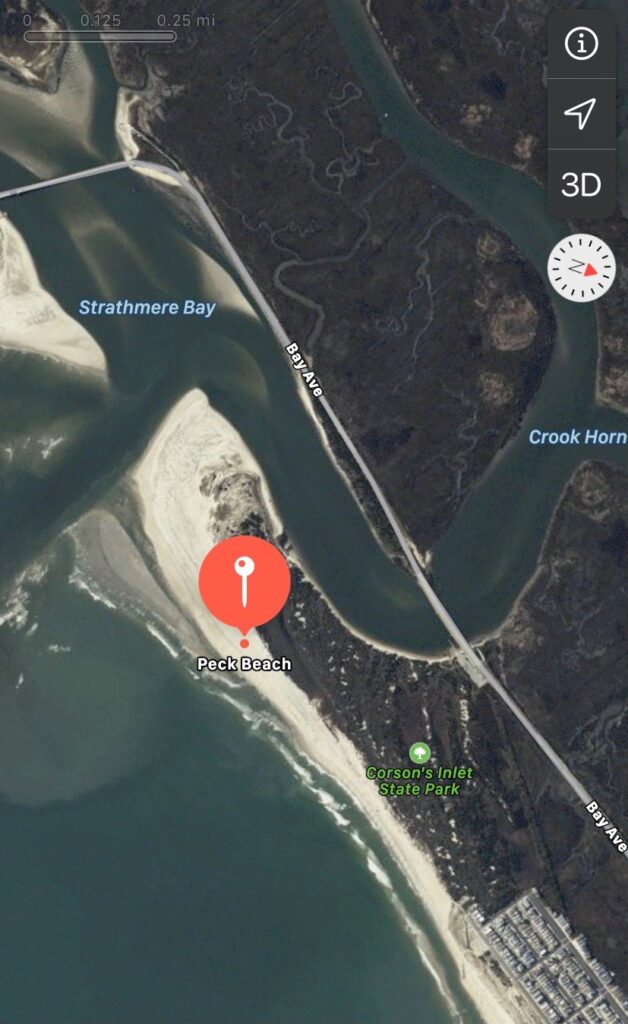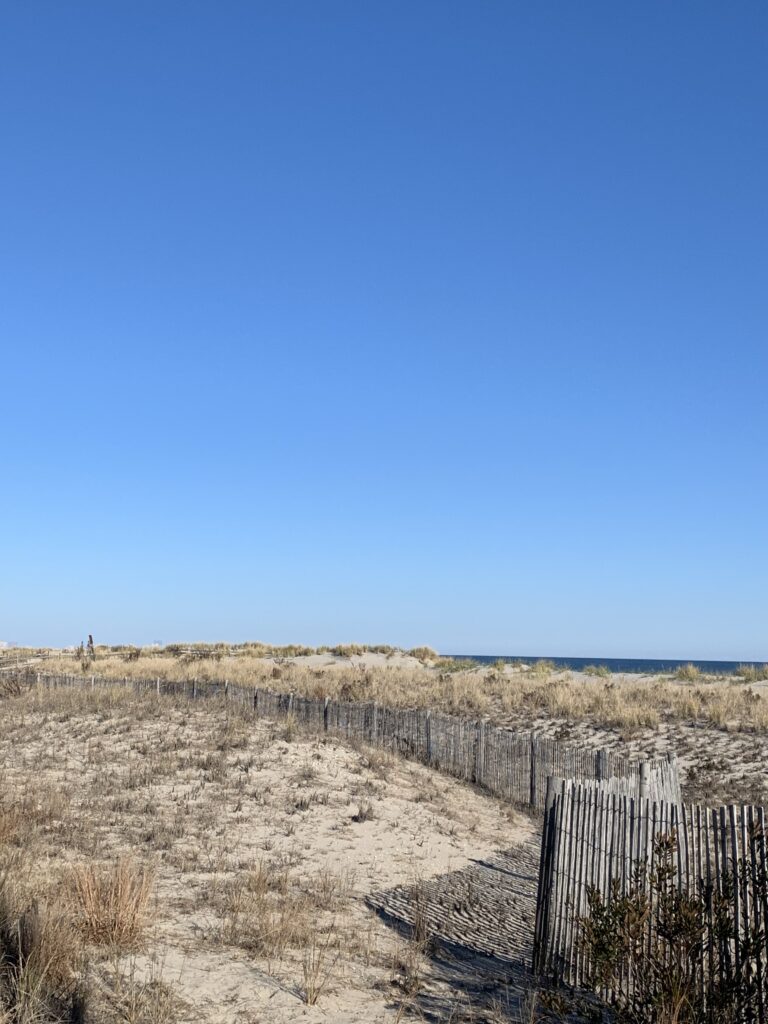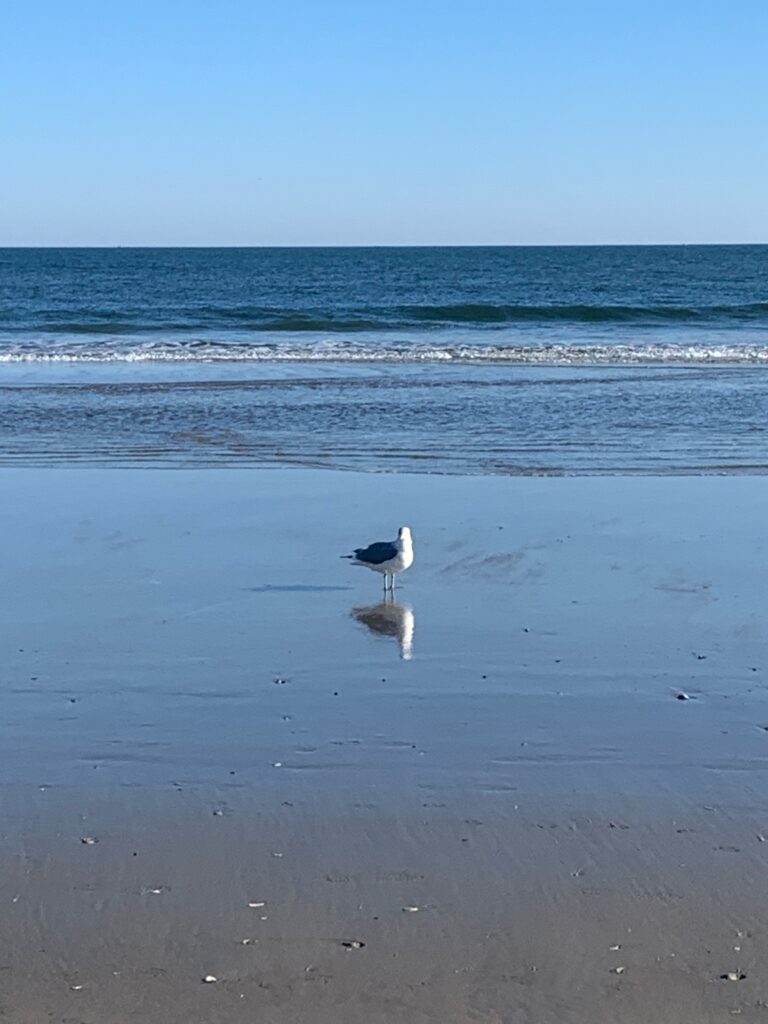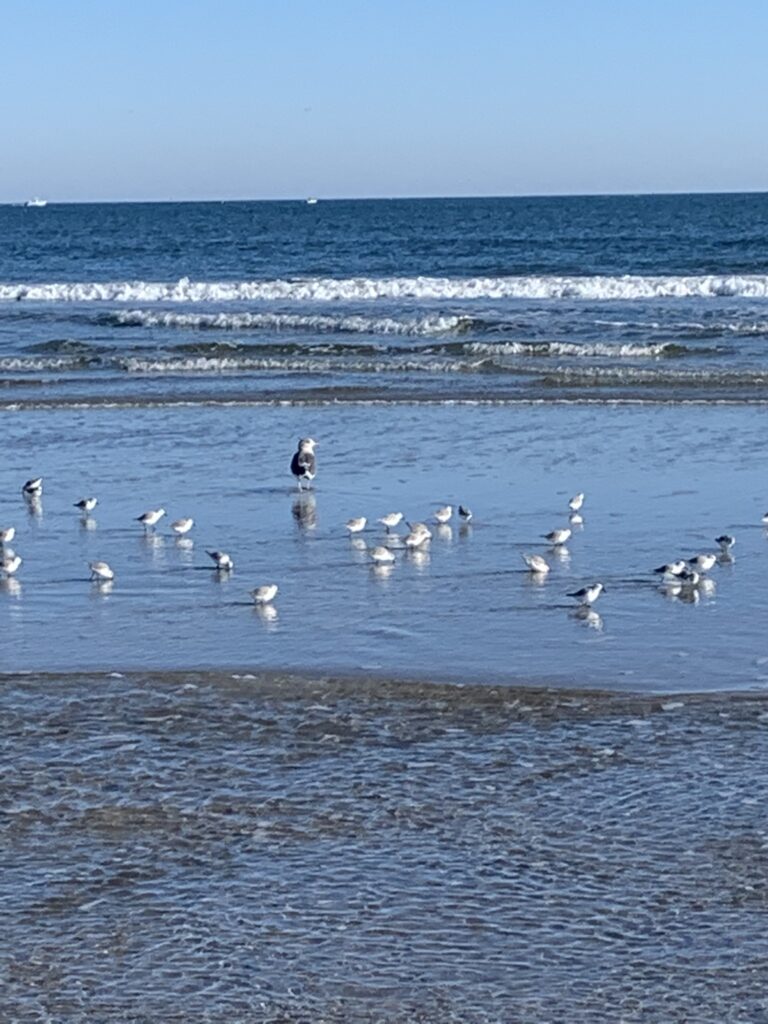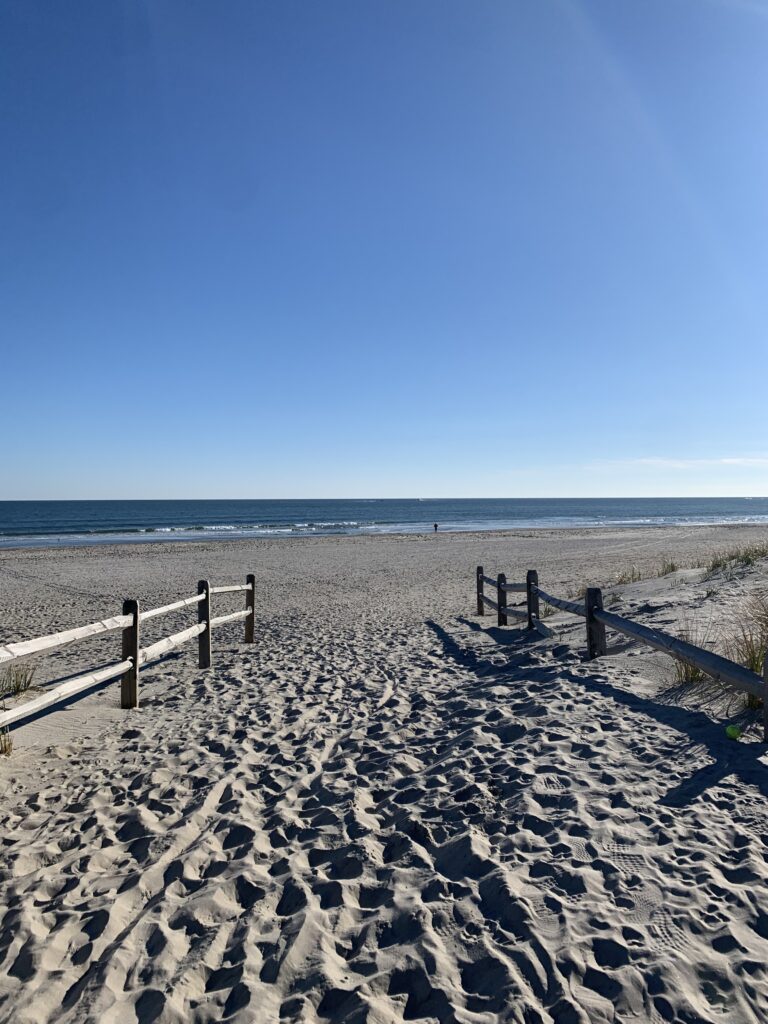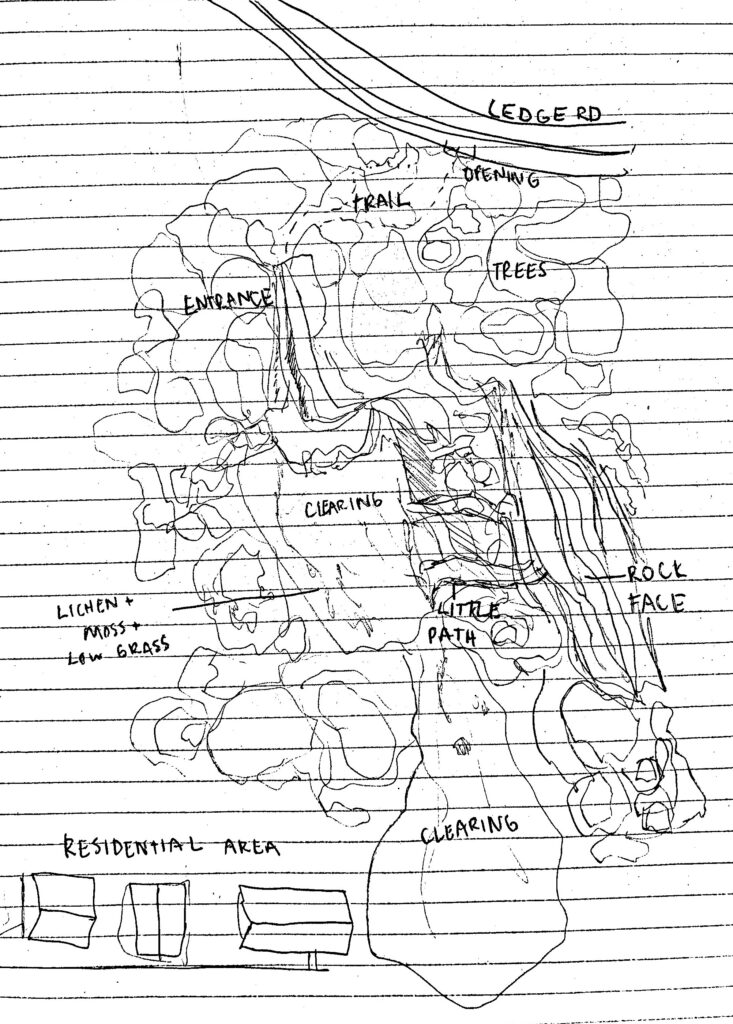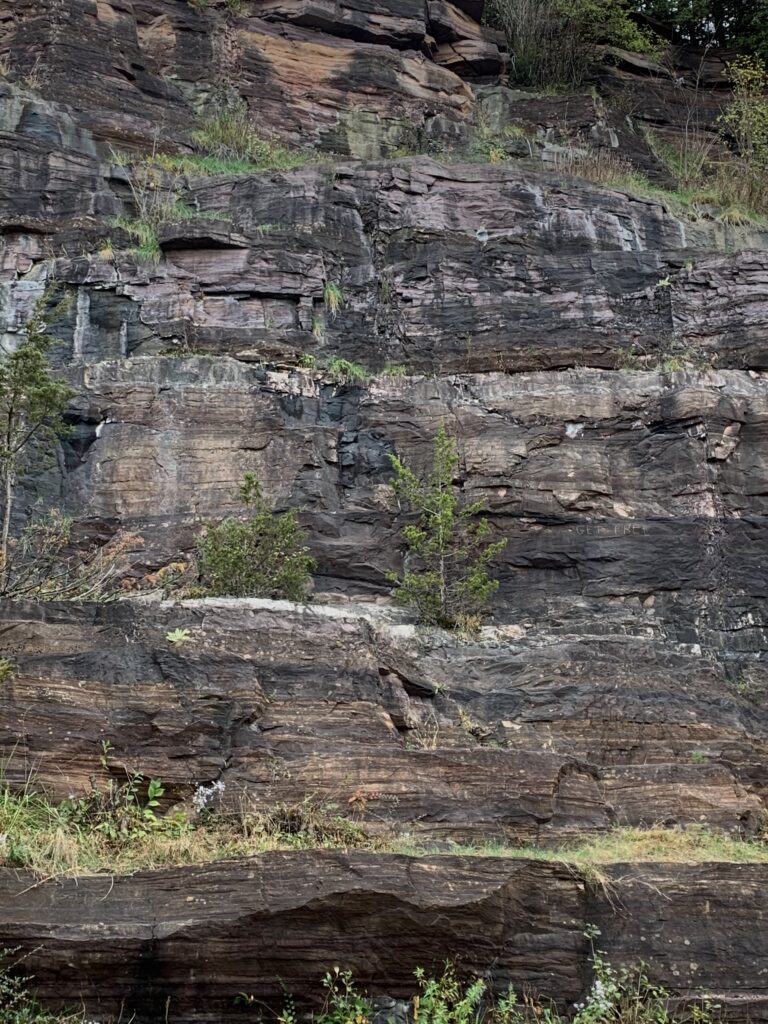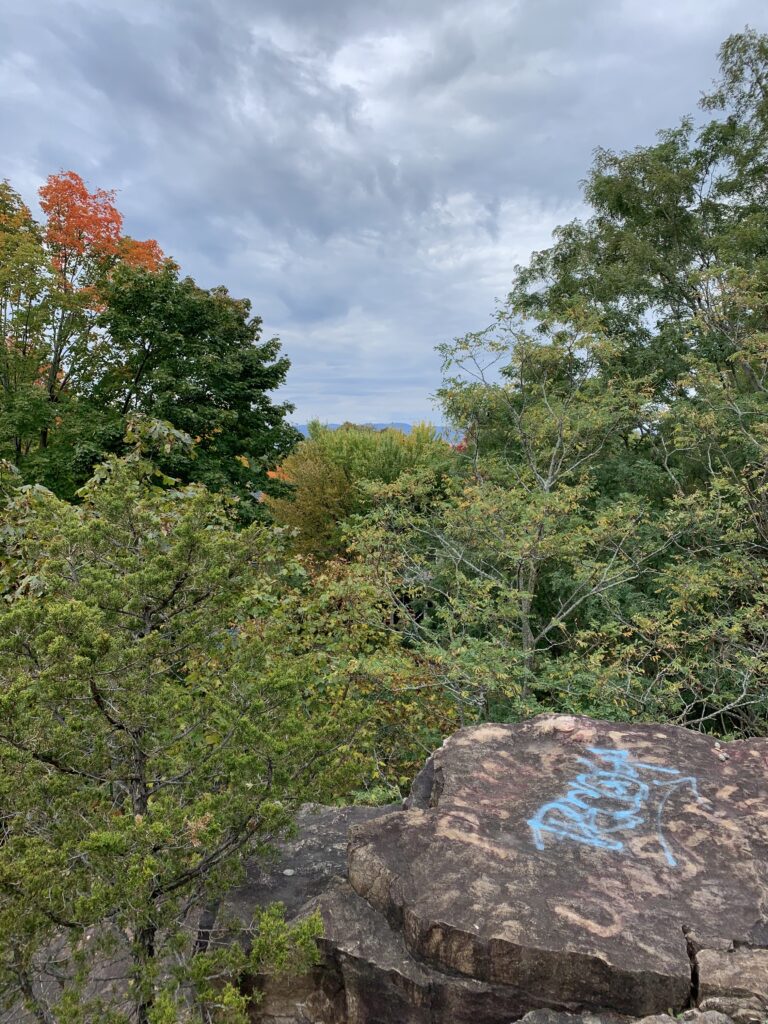The Redstone Quarry has a history that takes us back to the days when Burlington was a spot for mining Monkton Quartzite. Standing in front of the massive rock, I felt small and inferior. Looking up, I remember thinking about how long the rock has been there. Differing colors in the layers and parts of the wall that jut out tell me that the rock was formed long ago from sand deposits from the Iapetus Ocean. The rock has been a part of this landscape for centuries and has seen every change it has undergone.
At the Redstone Quarry, I remember seeing houses and backyards very close. I even saw a child’s bike parked on the trail. “Private property” signs tell me that some of this land is public, and some belong to the residents.
The Redstone Quarry rock was used as material to construct some UVM dorms on the Redstone Campus when it was a working quarry and mining area.
By 1958, the area was not operating as a working quarry and the University of Vermont bought it. Now, it is used for research and as a place for geology students to explore and learn from.
My new phenology spot, Peck’s beach in Ocean City, New Jersey has a rich history as well. John Peck bought the island in the 1700s to use as a storage place for whales that were caught. For a while, it served as a cattle-grazing area. Eventually, people began to inhabit the island and work as cattle farmers. Eventually, four Methodist ministers purchased the land and converted it into a Christian resort and camp. Today, we see some of the histories of land-use in Ocean City. Ocean City is a dry town still since it was bought by ministers. Beaches, flatlands, and vegetation layout space where cattle once grazed. Today, Ocean City and Peck’s beach are popular tourist destinations for summer vacation.
Works Cited:
